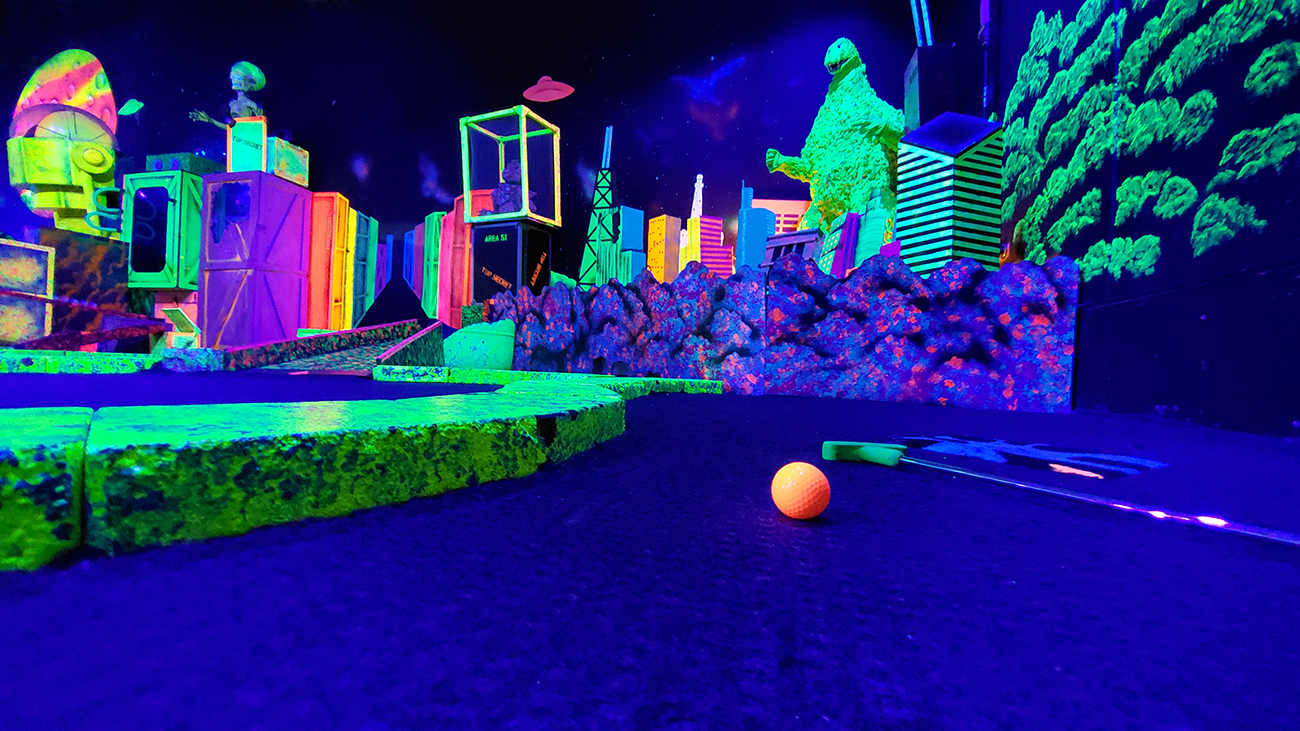Space golf: Teeing Off Beyond Earth
Space golf. The very term conjures images of astronauts swinging clubs in the weightlessness of orbit, balls arcing across the cosmos towards distant celestial targets. While still firmly in the realm of science fiction, the concept of playing golf in space has captured the imagination of enthusiasts and scientists alike.
This article will delve into the fascinating possibilities and challenges of this extraterrestrial endeavor, exploring the unique physics, technological hurdles, and potential benefits of venturing beyond the earthly confines of the golf course.
1.1 The Romantic Ideal

The allure of space golf lies in its inherent romanticism. It embodies the spirit of human exploration, pushing the boundaries of human achievement into the vast unknown. Imagine the spectacle: astronauts, clad in spacesuits, teeing off from the International Space Station (ISS), their shots soaring towards the Earth, a breathtaking backdrop against the inky blackness of space.
1.2 Scientific Potential
Beyond the spectacle, space golf presents intriguing scientific possibilities.
1.2.1 Physics in Microgravity
The near-zero gravity environment of space would drastically alter the trajectory and behavior of a golf ball. Without the influence of Earth’s gravity, a ball struck with the same force would travel much farther and potentially at much higher speeds.
1.2.2 Material Science
Developing golf clubs and balls specifically designed for the unique conditions of space could lead to advancements in materials science. Lightweight, high-performance materials would be crucial for both equipment and spacecraft.
1.2.3 Robotic Exploration

Space golf could serve as a platform for developing and testing robotic systems capable of precise movements and complex tasks in a challenging environment. These technologies could have applications in various fields, from space exploration and construction to medical robotics.
2.1 Overcoming Gravity
One of the most significant challenges is overcoming the effects of microgravity.
2.1.1 Swing Mechanics
The familiar swing mechanics of terrestrial golf would be severely disrupted in space. Astronauts would need to adapt their techniques to compensate for the lack of gravity and the potential for uncontrolled movement within the spacecraft.
2.1.2 Ball Trajectory
Predicting and controlling the trajectory of a golf ball in space would be incredibly complex. Factors such as air resistance (or lack thereof), the Earth’s gravitational pull, and the Coriolis effect would need to be carefully considered.
2.2 Technological Hurdles
Numerous technological hurdles must be overcome before space golf becomes a reality.
2.2.2 Spacecraft Design
Spacecraft would need to be designed to accommodate golf equipment and provide a safe and stable environment for astronauts to swing without compromising the integrity of the spacecraft.
2.2.3 Life Support Systems
Maintaining a stable and breathable atmosphere within the spacecraft during the golf activity would be paramount. Life support systems would need to be carefully designed to ensure the safety of the astronauts.
2.2.4 Equipment Design
Developing golf clubs and balls specifically designed for space would require significant research and development. These would need to be lightweight, durable, and capable of withstanding the extreme temperature fluctuations and radiation encountered in space.
3.1 The Lunar Course
The Moon presents a unique and intriguing location for a space golf course.
3.1.1 Reduced Gravity
The Moon’s lower gravity would significantly impact the trajectory and distance of golf shots. Balls could travel much farther than on Earth, potentially even entering lunar orbit.
3.1.2 Challenging Terrain
The uneven and cratered lunar surface would pose a unique set of challenges for golfers. Navigating the terrain and selecting appropriate landing zones would require careful planning and strategic thinking.
3.2 The Martian Greens
Mars, with its thin atmosphere and varying surface conditions, offers another exciting prospect for space golf.
3.2.2 Martian Atmosphere
The Martian atmosphere is much thinner than Earth’s, which would reduce air resistance and allow golf balls to travel farther. However, the lower atmospheric pressure could also affect the performance of the golf ball.
3.2.3 Diverse Terrain
Mars boasts a diverse range of terrains, from dusty plains to rocky canyons. This variety could be incorporated into the design of a Martian golf course, creating challenging and visually stunning holes.
While space golf may seem like a distant dream, it represents a fascinating intersection of sport, science, and exploration.
4.1 Technological Advancements
Continued advancements in space technology, such as the development of more powerful rockets, reusable spacecraft, and advanced robotics, will bring the dream of space golf closer to reality.
4.2 Public Interest
Generating public interest and support for space golf will be crucial for its development. Engaging the public through educational programs, media coverage, and simulated experiences can help to foster enthusiasm and inspire future generations of scientists and engineers.
4.3 The Human Spirit
Ultimately, the pursuit of space golf embodies the human spirit of exploration, pushing the boundaries of what is possible and inspiring us to reach for the stars. Whether it ever becomes a reality, the concept of space golf serves as a powerful reminder of our enduring fascination with the cosmos and our relentless quest for new frontiers.
Space golf, while currently a concept, holds the potential to not only entertain but also advance our understanding of physics, materials science, and robotics.
By overcoming the significant challenges associated with this endeavor, we can unlock new frontiers in space exploration and inspire future generations to reach for the stars.
As we continue to explore the cosmos, the dream of playing golf among the stars may one day become a reality, a testament to the enduring human spirit of adventure and the boundless potential of human ingenuity.



